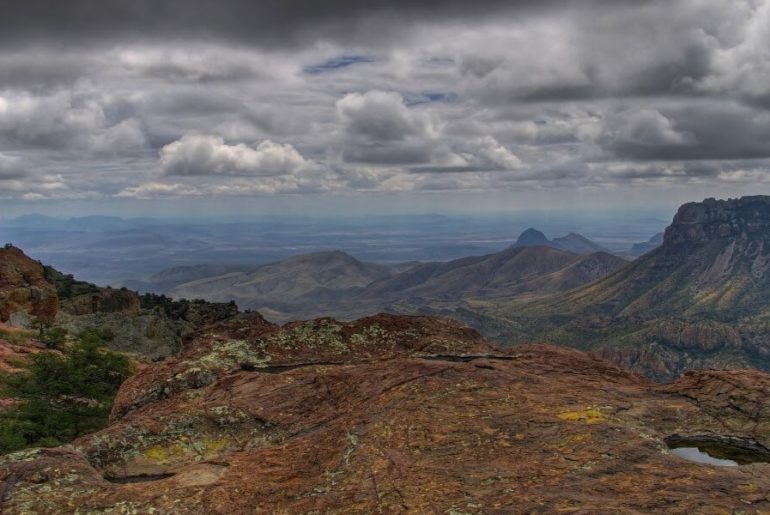There is a place in southwest Texas, that has seen the history of America unfold unlike any other. From hunter gatherers to nomad tribes, to the Spanish invasion and the Civil War, Big Bend National Park has seen it all, and it has the scars to show it. Unfortunately, the Trump administration will incite another scar upon this beautiful, historic park.
If the political promises of President Trump are fulfilled, a concrete border wall of 30 feet may soon cut through parts of the Big Bend land, upsetting the delicate natural balance in what is considered one of the most treasured ecosystems in Texas.
Being one of the most archaeologically significant and biodiverse sites in the US, Big Bend has been preserved and adored for centuries, eventually becoming a national park in 1944. The park is home to 1,200 species of plants, more than 450 species of birds, 56 species of reptiles, and 75 species of mammals, as well as many geological features like dinosaur bones and volcanic dikes. It is also the greatest area of Chihuahuan Desert topography that is protected in the United States.
When Customs and Border Protection established areas where a new wall is required, which include San Diego, California, Tucson, Ariz., El Paso, Texas, and the Rio Grande Valley, the Big Bend National Parkland area was not considered one of them. In fact, according to NPR, the area has seen fewest apprehensions of illegal crossers every year for the past 44 years, which is why some question the need for a wall to be built on this land.
Marcos Paredes, a local retired park river ranger, explained to USA Today how the wall would be unnecessary to prevent smugglers and those trying to cross through this land. There is already a lack of crossings in the area, according to Paredes, and a wall isn’t necessary because the 1,500-foot high canyons at the river and miles of inhospitable Chihuahuan desert make the place almost impermeable. Paredes stated concerns for the significant impact a wall could have on the ecology of the area, including how it would inevitably affect the Mexican black bears, a species who were once nearly gone from the area and have since repopulated it.
“Logistically, it just doesn’t make any sense,” he said. “The only people who believe that a wall down here is a good idea are people who have never seen this country.”
However, Scott Nichol of the Sierra Club Borderlands, told USA Today that “if federal officials wanted to put up just a few miles of wall to “fulfill campaign promises,” Big Bend might be the “ideal place to do it.”
One of the main setbacks of the president’s immigration project has been that a lot of the land that makes up the Texas border is privately owned, meaning that the government would have to acquire the land by condemnation, which is the process in which government agencies take private property for public use with payment of compensation. This process makes building a wall more complicated, and it would take years of court proceedings. It appears one solution for the Trump administration could be to build the wall on a place already owned by the federal government.
“Building a wall in Big Bend would be horrific,” Nichol said. “But [Trump’s] planners might find it appealing because they don’t have to take anybody’s land and don’t have to go to court.”
President Trump’s executive order calls for an impregnable wall along the border, which includes 118 miles of the Rio Grande river shared by the national park and Mexico. Big Bend National Park is one of the largest stretches along the Texas-Mexico border already owned by the federal government.
“Every Texan should be outraged that President Trump is threatening our biggest wilderness, our biggest national park, that we donated to the federal government to be part of the National Park system,” Rick LoBello of the Greater Big Bend Coalition told USA Today.
The outcry has been so impactful that Trump’s plan might be halted. When it was made known that the park would be one of the construction places for the wall, The County Commissioners of Brewster County, a county which includes the national park, passed a unanimous resolution stating that the wall was unnecessary and outlined their opposition to it.
“I’m a Brewster County native,” Commissioner Betse Esparza told NPR. “To imagine a wall in the midst of that landscape, which is beautiful. This is God’s country. It’s really unimaginable. I don’t want to think about it.”
Building the wall on Big Bend National Parkland is not the only problem that activists and park enthusiasts have expressed with the Trump administration’s treatment of the National Park Service (NPS). Trump’s proposed budget for 2020, which includes significant increases in border security spending, reduces the NPS budget cut by $481 million. Furthermore, the government announced that it will send a wave of park rangers to the U.S.-Mexico border and adjust their duties to help the Border Patrol stop undocumented immigrants and drug trafficking.

